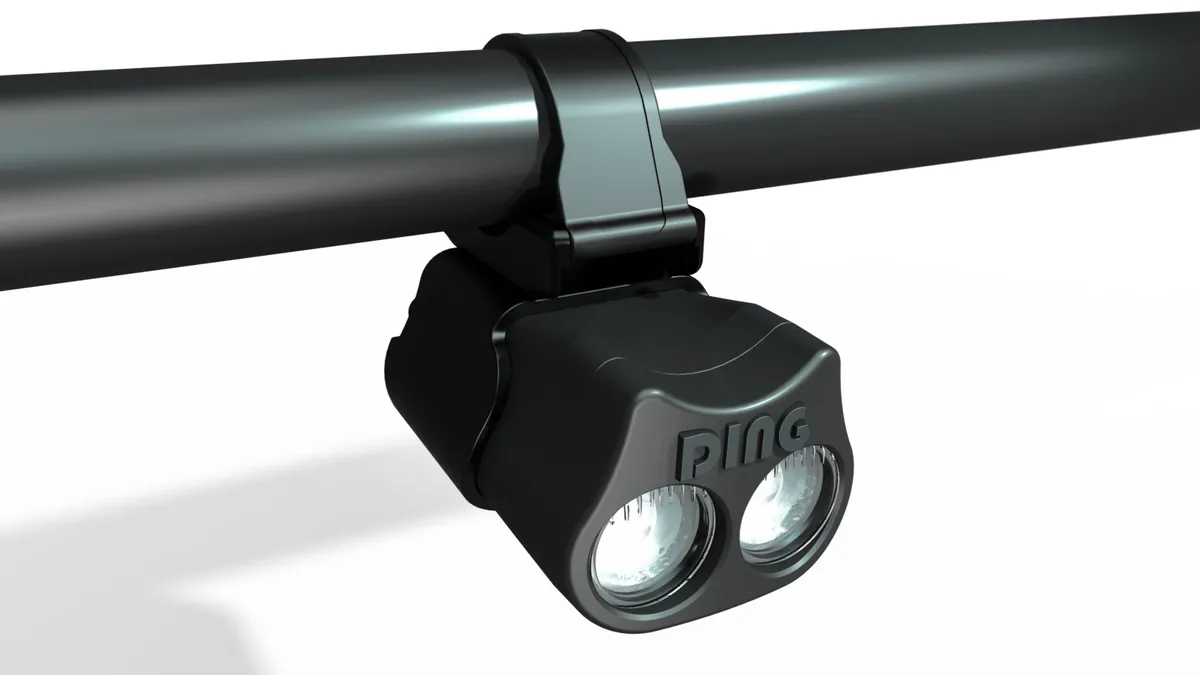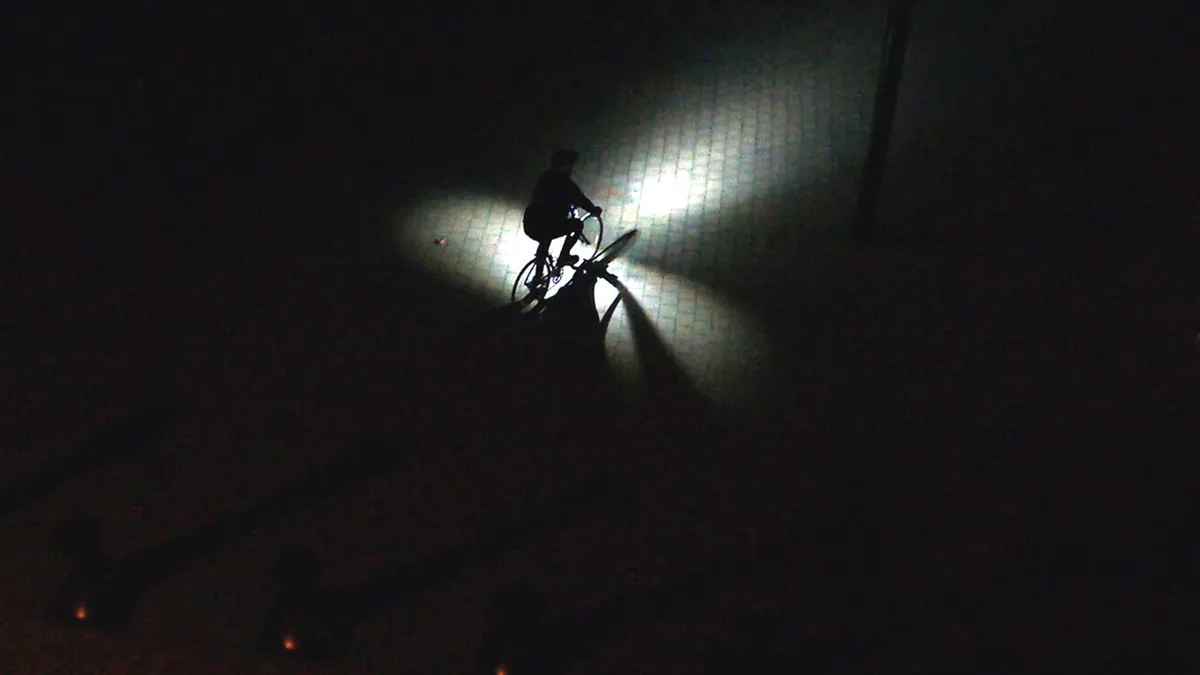New lights often pop up on Kickstarter, but rarely do they offer something genuinely unique or with unarguable expertise backing them up. Australian startup Ding has managed to tick both these boxes, however, matching award winning lighting knowledge from the automotive industry with a novel idea.
Ding's USP is its triple-beam combination that delivers a 150-lumen downward illumination, creating a 3 x 1.5m rectangular light surrounding the rider for absolute visibility, alongside a more traditional twin 400-lumen frontal beam for sight.

The 110g Ding front light
If you've ever ridden in pitch black, you'll know how little traditional lights do to keep you visible from all angles. Ding is a newcomer to the cycling industry, but its fresh approach to cycle lighting has the potential to set a new benchmark for nighttime cycle safety.
The lights’ lead designer, Desmond Burns, has a background in automotive lighting. He previously designed optics for Audi, among others, and more recently worked as head of R&D at LightForce, a 4WD lighting specialist.
While the 400-lumen forward facing number doesn’t sound like anything special, Burns was quick to point out that the lumen number often means little, and implementation of the output is everything.
For example, the optics are said to be totally custom and when we recently met Burns in Sydney, he told us the team were still finalizing the beam cut-off to stop wasted light output into the sky and subsequent blinding of drivers.
Battery life from the user-replaceable and USB-rechargeable lithium-ion unit is quoted at an impressive three hours on high power. A sealed switch doubles as the battery indicator, and pre-set reserves will force the light onto lower settings if battery levels become low.
The light is housed in a strong and lightweight UV-resistant polycarbonate casing, with weight kept to a claimed 110g.
The mount has gone through several revisions, with the current design using a reinforced composite silicone material that offers adjustment points so as not to rely on the materials’ stretch. This is said to be compatible with all common handlebar diameters from 20 to 40mm, and allows the light to be positioned on top or beneath the bar, as well as centrally placed underneath common stems.
Ding launched today on KickStarter. First backers' delivery is expected in October with single light options starting at AU$85 (plus international delivery). The light is expected to retail for AU$120 (approximately US$94 / £60).





